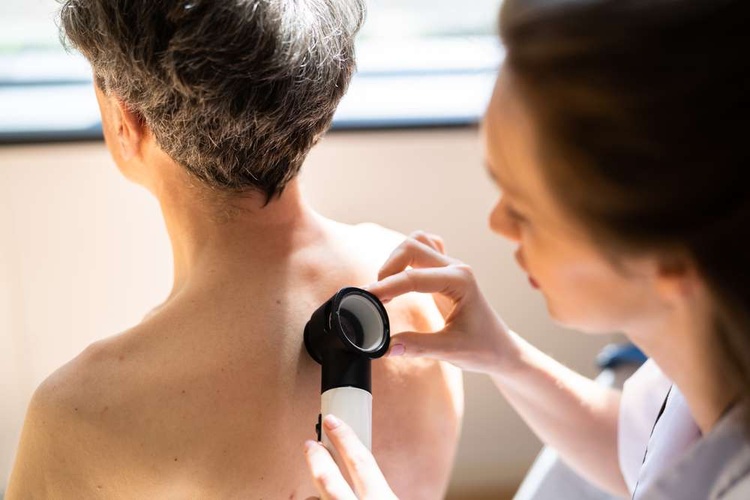Understanding Mycosis Fungoides: A Comprehensive Guide
Mycosis fungoides represents the most common form of cutaneous T-cell lymphoma, affecting thousands of individuals worldwide each year. This complex skin condition progresses through distinct stages, beginning with patches that may resemble eczema or psoriasis before potentially advancing to more serious manifestations. While the exact mechanisms behind its development remain under investigation, medical professionals have identified several key factors that contribute to its onset and progression. Early recognition and appropriate treatment can significantly impact patient outcomes, making awareness of this condition crucial for both healthcare providers and patients. Understanding the various aspects of mycosis fungoides empowers individuals to seek timely medical attention and work effectively with their healthcare teams to manage this challenging condition.

Mycosis fungoides stands as the most prevalent type of cutaneous T-cell lymphoma, accounting for approximately 50% of all primary cutaneous lymphomas. This malignancy affects the skin primarily, though it can progress to involve lymph nodes and internal organs in advanced stages. The condition typically develops slowly over years or decades, making early detection challenging but crucial for optimal treatment outcomes.
Introduction to Mycosis Fungoides
Mycosis fungoides originates from malignant T-helper cells that accumulate in the skin, creating characteristic lesions that evolve over time. The disease name, coined in the 19th century, reflects the mushroom-like appearance of advanced tumors, though most patients never reach this stage with modern treatment approaches. The condition affects individuals of all ages but shows higher prevalence in adults over 50, with men being affected slightly more frequently than women. Geographic variations exist, with higher incidence rates reported in certain regions, suggesting potential environmental or genetic factors may influence disease development.
Causes and Risk Factors
The exact etiology of mycosis fungoides remains incompletely understood, though researchers have identified several contributing factors. Genetic predisposition plays a role, with certain HLA types showing increased association with the disease. Environmental exposures, including occupational chemicals, pesticides, and industrial solvents, have been linked to higher risk in some studies. Chronic immune stimulation from infections or inflammatory conditions may also contribute to disease development. Age represents a significant risk factor, with incidence increasing substantially after age 40. Additionally, individuals with compromised immune systems, whether from medical conditions or treatments, face elevated risk for developing this form of lymphoma.
Symptoms of Mycosis Fungoides
Mycosis fungoides typically presents in three distinct stages, each with characteristic symptoms. The patch stage manifests as thin, scaly, itchy lesions that often resemble eczema or psoriasis, leading to frequent misdiagnosis. These patches appear as red, flat areas with fine scaling, commonly affecting sun-protected areas like the buttocks, thighs, and trunk. The plaque stage involves thicker, raised lesions that may become ulcerated and are often intensely itchy. Advanced disease progresses to the tumor stage, characterized by large nodules that can break down and become infected. Throughout all stages, patients frequently experience significant itching that can severely impact quality of life and sleep patterns.
Diagnosis and Staging
Diagnosing mycosis fungoides requires a combination of clinical evaluation, histopathological examination, and specialized testing. Skin biopsies remain the cornerstone of diagnosis, though multiple biopsies may be necessary due to the patchy nature of early disease. Pathologists look for specific cellular changes, including epidermotropism and atypical lymphocytes with cerebriform nuclei. Immunohistochemistry and molecular studies help confirm the diagnosis and rule out other conditions. Staging involves assessing the extent of skin involvement, lymph node status, and potential organ involvement through physical examination, imaging studies, and sometimes bone marrow biopsy. The TNM staging system classifies disease extent and guides treatment decisions.
Treatment Options
Treatment approaches for mycosis fungoides vary significantly based on disease stage and patient factors. Early-stage disease often responds well to topical therapies, including corticosteroids, nitrogen mustard, and retinoids. Phototherapy, particularly narrowband UV-B and PUVA treatments, provides effective options for widespread skin involvement. Radiation therapy offers excellent local control for limited lesions or as palliative treatment for advanced disease. Systemic therapies become necessary for advanced stages, including traditional chemotherapy, targeted agents like bexarotene, and newer immunotherapies. Stem cell transplantation may be considered for younger patients with aggressive disease.
| Treatment Category | Options Available | Typical Applications | Estimated Costs |
|---|---|---|---|
| Topical Therapies | Corticosteroids, Nitrogen Mustard, Retinoids | Early-stage patches and plaques | $50-$500 monthly |
| Phototherapy | NB-UVB, PUVA, ECP | Widespread skin involvement | $100-$300 per session |
| Radiation Therapy | Electron beam, Total skin irradiation | Localized tumors, palliative care | $10,000-$50,000 course |
| Systemic Therapy | Chemotherapy, Targeted agents | Advanced disease | $5,000-$15,000 monthly |
Prices, rates, or cost estimates mentioned in this article are based on the latest available information but may change over time. Independent research is advised before making financial decisions.
The prognosis for mycosis fungoides varies considerably depending on the stage at diagnosis and response to treatment. Patients diagnosed in early stages often enjoy normal life expectancy with appropriate management, while advanced disease carries a more guarded prognosis. Regular follow-up care remains essential for monitoring treatment response and detecting disease progression. Support groups and patient education resources play valuable roles in helping individuals cope with this chronic condition. Ongoing research continues to explore new therapeutic approaches, including novel immunotherapies and targeted treatments that may improve outcomes for patients with this challenging form of lymphoma.
Disclaimer: This article is for informational purposes only and should not be considered medical advice. Please consult a qualified healthcare professional for personalized guidance and treatment.




